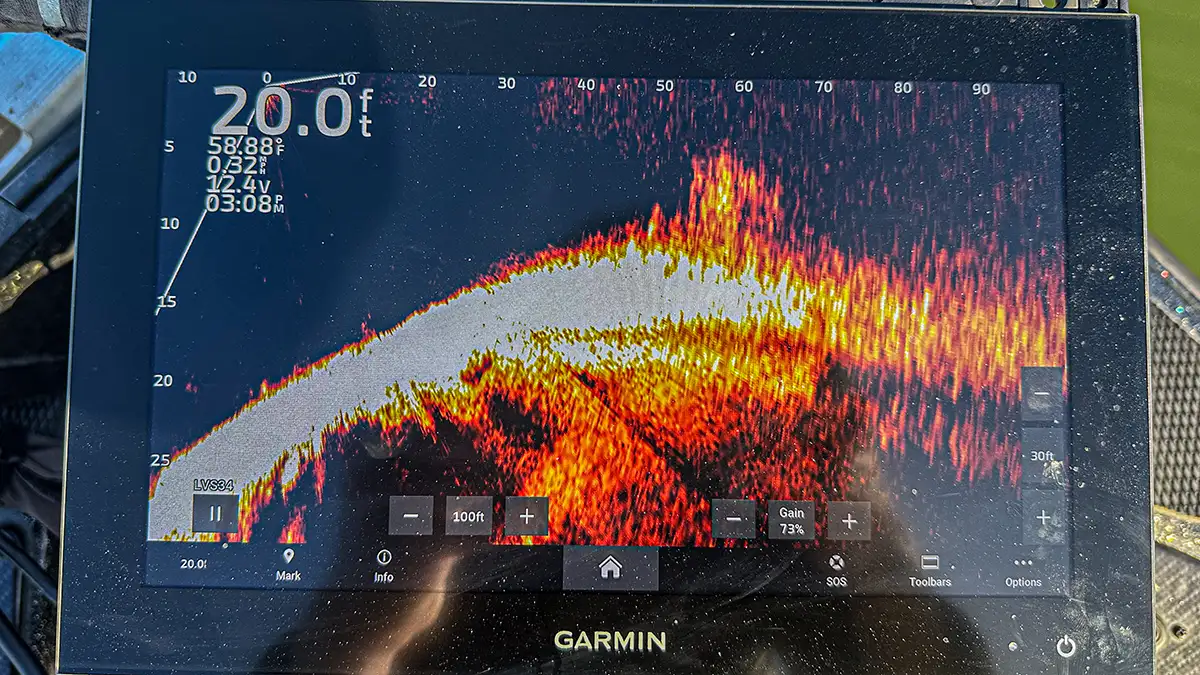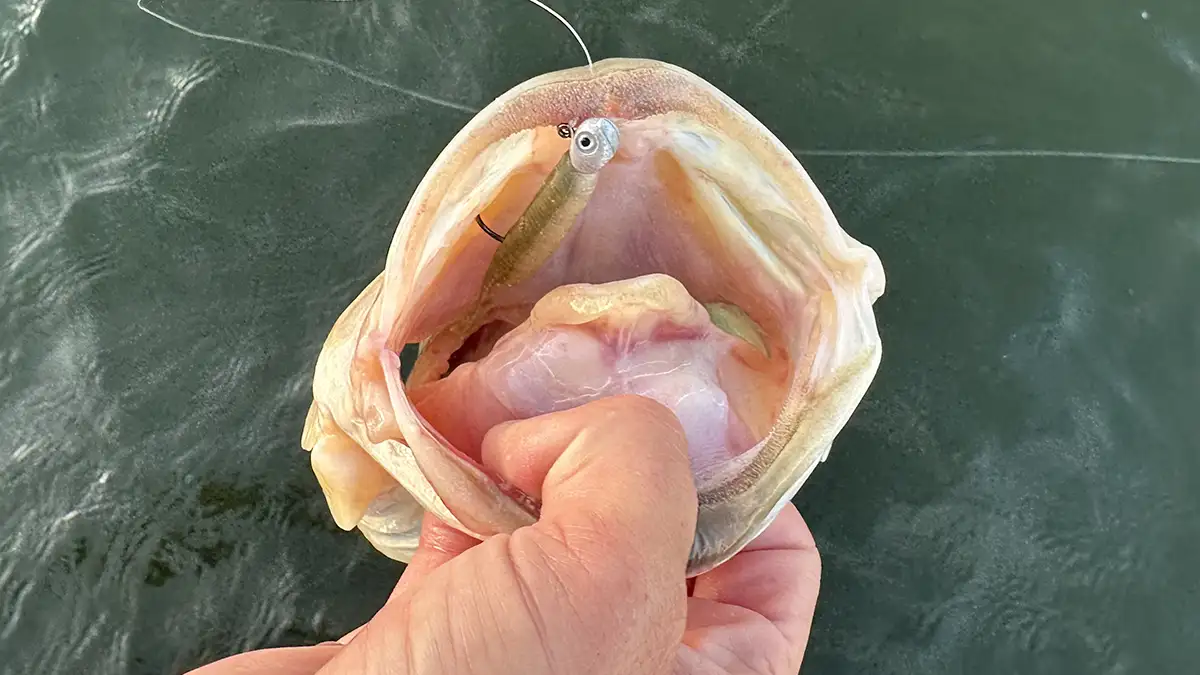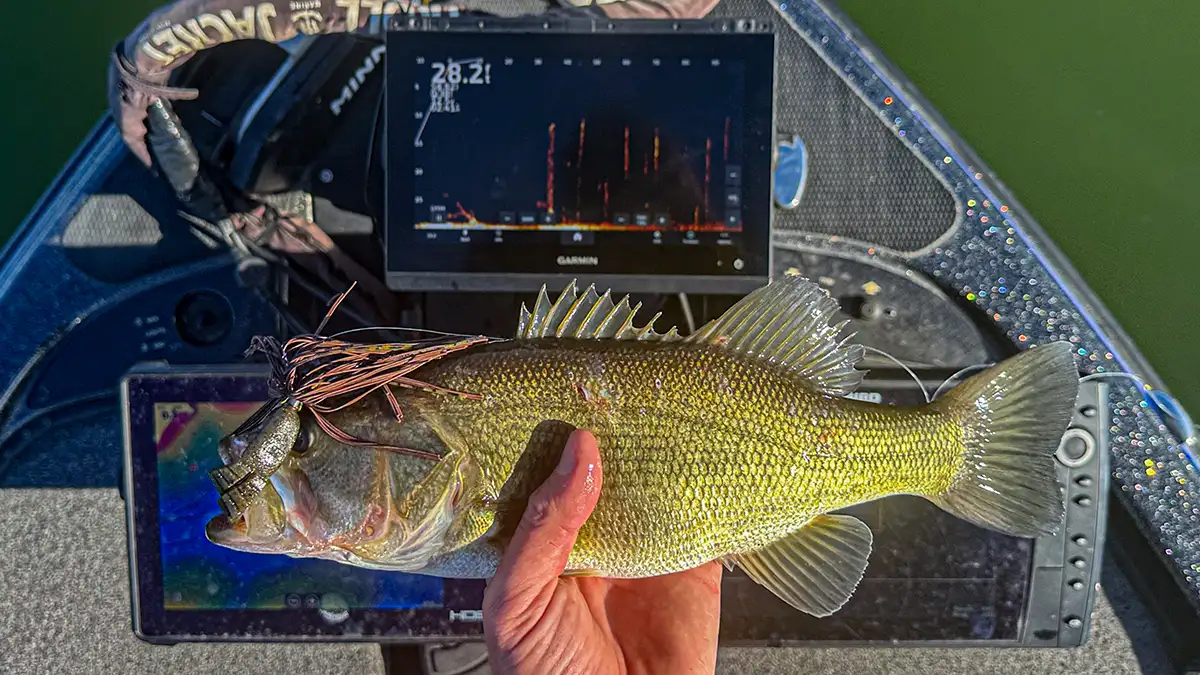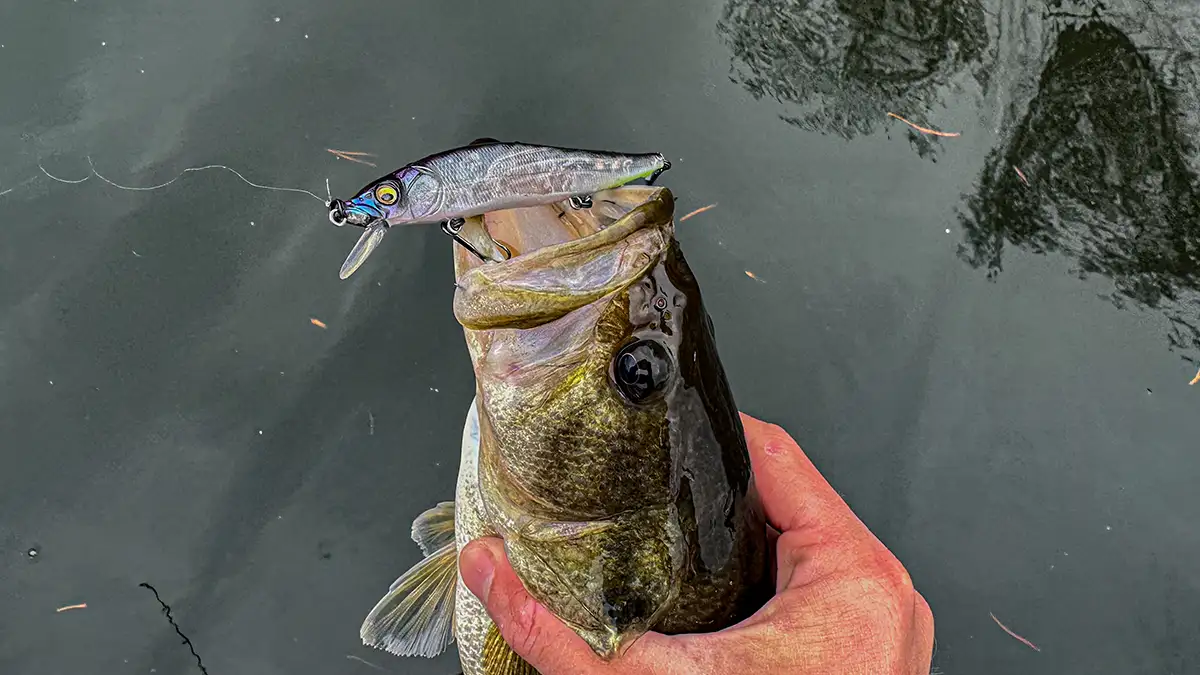Warning: Undefined variable $k in /home/nginx/domains/wired2fishcom.bigscoots-staging.com/public/wp-content/themes/understrap-child-0.6.0/functions.php on line 984
Warning: Undefined variable $k in /home/nginx/domains/wired2fishcom.bigscoots-staging.com/public/wp-content/themes/understrap-child-0.6.0/functions.php on line 987
If you follow tournament bass fishing, you know that forward facing sonar has dominated the majority of major bass tournaments. This new technology has opened doors for anglers allowing them to target bass that haven’t been fished for. There are a wealth of benefits associated with this new technology, however it comes with its disadvantages as well. Over the last several months there has been lots of backlash directed towards forward facing sonar. Many anglers and fans argue that this technology is having a negative impact on the sport, taking away from its exciting nature.
Much of this scrutiny comes from the fact that many anglers no longer practice traditional methods of bass fishing. It seems that traditional methods such as flipping and shallow water fishing are quickly becoming a thing of the past. While this may seem like the case on paper, there are still tons of anglers such as John Cox and Keith Carson who are consistently successful practicing these old school methods. This begs the question, is forward facing sonar an advantage or disadvantage? This feature will highlight some of the advantages and disadvantages of forward facing sonar.

YOU’RE MORE EFFICIENT
One of the biggest advantages of forward facing sonar is it makes you a much more efficient angler. When fishing without this technology, you’re required to make hundreds of casts before you’re certain if an area is productive or not. This means spending lots of time at each location you’d like to fish. While this is still a productive method for catching bass, it can lead to inconsistency. Covering water without this technology can quickly eat away at your fishing time and lead to an unsuccessful day if you’re not around fish.
Forward facing sonar lets you quickly see if you’re around fish without ever making a cast. This allows you too quickly rule out unproductive water without spending lots of time in an area. This has allowed anglers who are proficient with this technology to be much more consistent than anglers who fish without it. Being able to consistently be around fish regardless of the conditions is a major advantage, especially when fishing a multi day tournament. A prime example of this is this years Bassmaster Elite Series Rookies. The majority of these anglers weighed almost every bass they caught using forward facing sonar. This allowed them to remain consistent on a variety of lakes across the country. Not only does this technology make you a more efficient angler, it also allows you to target fish that haven’t been fished for.

YOU CAN TARGET SUSPENDED FISH
There is a large population of bass on nearly every lake in the country that live offshore year round. These fish can be on a variety of different structures, and targeting them without electronics can be quite difficult. Even without forward facing sonar, anglers have been successful fishing offshore since the dawn of the sport. Locations such as brush piles, ledges and hard spots are all historic location to catch trophy bass. However, with the introduction of forward facing sonar anglers are able to target a whole other group of bass that would otherwise go unnoticed.
Being able to see individual fish in real time allows anglers to target not only fish on the bottom, but suspended fish as well. On nearly every lake in the country fish suspend in the water column in search of baitfish and other floating forage. These fish have gone largely unnoticed until the introduction of this technology, and they have quickly started to play a roll in bass tournaments all over the country. On spotted bass fisheries such as the Coosa and Tallapoosa River, bass will suspend in the river channel in search of bait balls. Casting at these fish using a jig and minnow and forward facing sonar has quickly become a popular way to catch bass on these types of fisheries. While this technology undoubtably helps with targeting suspended fish, it also plays a major roll in other types of offshore fishing.

EASIER TO FISH OFFSHORE
Traditional offshore fishing consisted of blind casting towards brush, ledges and other types of offshore cover. While this is still a viable way to catch fish, this technology has made anglers much more efficient at this style of fishing. Being able to see individual fish in real time allows anglers to quickly rule out dead water and stay around fish all day. It also allows you to quickly adjust your presentation based on the fishes reaction to your lure. If you notice that fish are active and chasing your bait, this is a good sign to throw moving baits and other types of reaction lures. If fish are sluggish and tight to the bottom however, this is a sign to slow down and drag a bottom bait.
Forward facing sonar allows angler to fish much smarter and make more educated decisions on the water. This can be a major game changer for anglers who have traditionally practiced these methods of fishing. While forward facing sonar is extremely helpful in certain scenarios, it does come with its disadvantages. One of the biggest disadvantages I’ve experienced using this technology is that it can be extremely distancing.

IT’S DISTRACTING
While it may seem like forward facing sonar is plug and play, that’s simply not the case. Just because you have forward facing sonar on your boat doesn’t mean you’re going to catch fish. This technology can actually hurt your performance if you don’t know when to turn it off. There have been numerous tournaments where I’ve found myself aimlessly fishing and staring at the screen without actively using my head. This is one of the hardest things to overcome when using this technology. It’s easy to go out and stare at your screen all day without thinking critically about bass movement and running a productive pattern.
Furthermore, tournaments are still won without forward facing sonar fairly consistently. This is especially true in one day events. Growing up I was strictly a shallow fisherman, and I had gained a lot of confidence in this style of fishing. Since I’ve gotten forward facing sonar I’ve found that I’ve lost a lot of my confidence in shallow water since I spend the majority of time using this new technology. This has hurt me in numerous events, especially during the spawn. Many anglers and fans of the sport think that forward facing sonar is as easy as turning it on and casting at dots. While it may sound easy, this is simply not the case.

IT’S NOT EASY
I’ve been using forward facing sonar for around two years now, and I still feel like I have a lot to learn. While the concept is easy, you still have to think critically and find a productive pattern or location. Furthermore, not every fish you see on the screen is a bass. You have to determine what’s a bass, crappie, carp or other type of fish. This comes with understanding how fish position, look and act on forward facing sonar. There’s a big learning curve associated with this new technology, and the only way to get better is spending time on the water. However, once you understand how and when to use forward facing sonar, it undoubtably makes you a more efficient and consistent angler.
Although it may seem as easy as turning on the screen and catching fish, this is sadly not the case. Forward facing sonar has quickly taken over the world of bass fishing, however there’s a lot to learn when it comes to being proficient with this new technology. While none can deny that this technology has helped anglers catch more and bigger fish, it can still hinder your performance if you don’t know how and when to use it. Forward facing sonar can be both an advantage and a disadvantage, however it all comes down to what you do with it.












